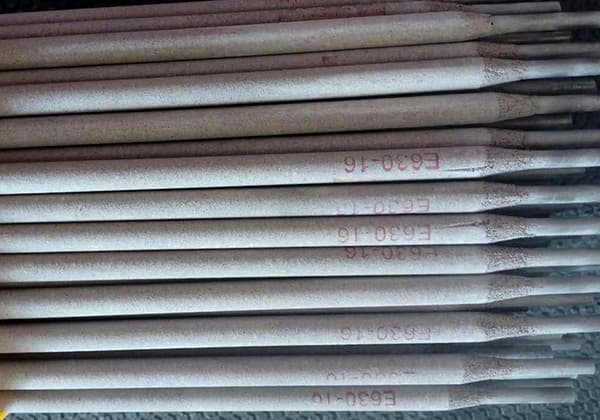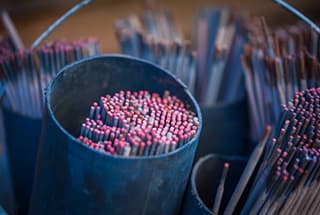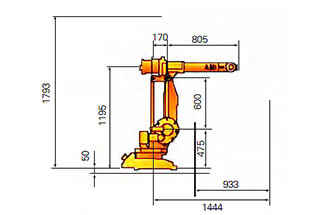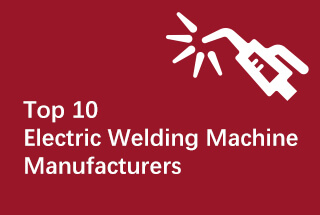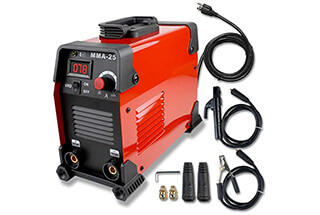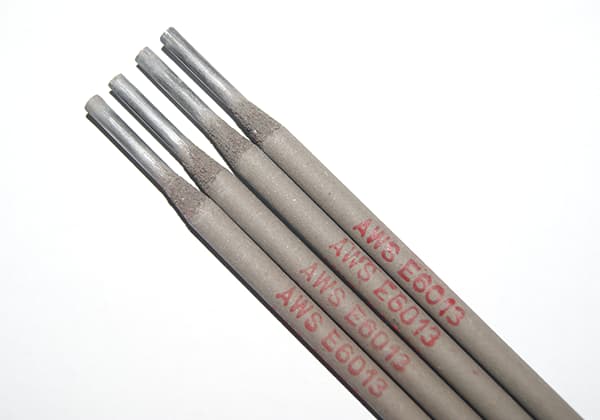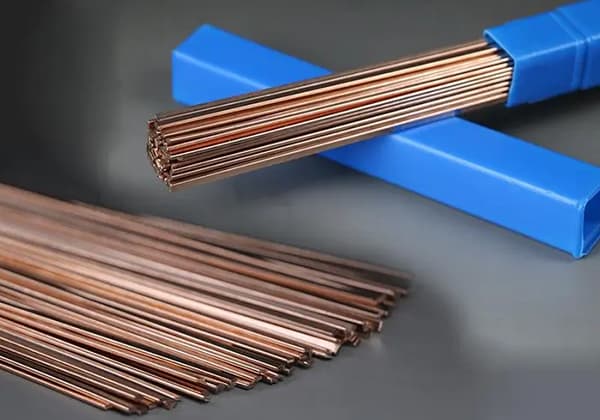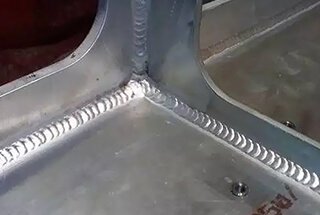
Choosing between solid and flux-cored welding wires can be a daunting task. Did you know the right choice can significantly affect the quality and efficiency of your welds? This guide simplifies the selection process, explaining how to match welding wire types to specific steel grades, welding conditions, and performance needs. By the end of the article, you’ll understand the key differences and applications of both wire types, helping you make informed decisions for your welding projects. Dive in to enhance your welding skills and ensure optimal results!
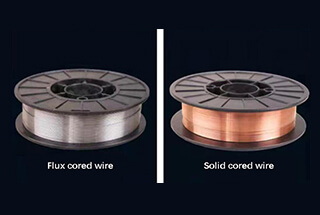
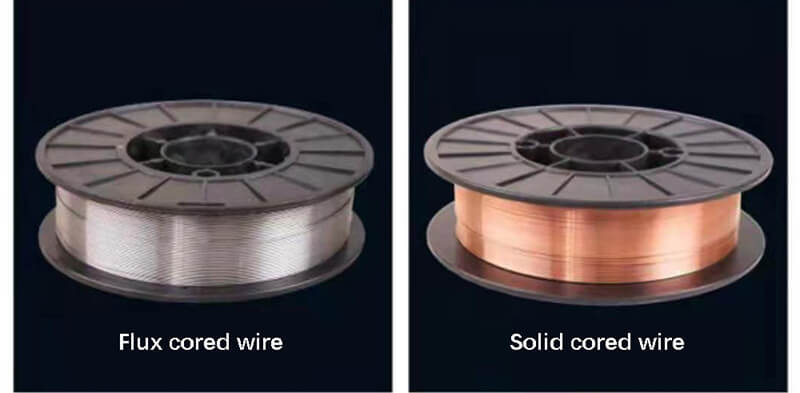
The selection of welding wire should be based on the type of steel to be welded, the quality requirements of the welding parts, the welding construction conditions (plate thickness, groove shape, welding position, welding conditions, post-weld heat treatment, and welding operation, etc.), and cost considerations.
The order of consideration for selecting welding wire is as follows:
① Select welding wire based on the type of steel in the structure to be welded.
For carbon steel and low alloy high-strength steel, the principle of “equal strength matching” is mainly followed, selecting the welding wire that meets the mechanical performance requirements.
For heat-resistant steel and weather-resistant steel, the emphasis is mainly on the consistency or similarity of the chemical composition of the weld metal and the parent material, to meet the requirements for heat resistance and corrosion resistance.
② Select welding wire based on the quality requirements of the part to be welded (especially impact toughness).
Related to welding conditions, groove shape, proportions of protective gas, and other technical conditions, the welding materials that achieve the maximum welding efficiency and reduce the welding cost should be selected, ensuring the performance of the welded joint.
③ Select welding wire based on the onsite welding position.
Corresponding to the plate thickness of the workpiece to be welded, select the diameter of the welding wire used, determine the current value used, and refer to the product introduction materials and usage experience of various manufacturers to select the welding wire brand suitable for the welding position and current use.
The welding process performance includes arc stability, splash particle size and quantity, slag removal, weld appearance, and shape. For the welding of carbon steel and low alloy steel (especially semi-automatic welding), the welding method and welding materials are mainly selected based on the welding process performance.
The comparison of the welding process performance of gas-shielded welding using solid wire and flux-cored wire is shown in Table 1.
Table 1 Comparison of Welding Process Performance between Solid Core Welding Wire and Flux Core Welding Wire in Gas Shielded Welding
| Welding process performance | Solid core welding wire | CO2 welding, flux-cored welding wire. | ||||
| CO2 Welding | Ar+CO2 Welding | Slag Mold | Metal Powder Type | |||
| Difficulty of Operation | Flat Welding | Ultra-thin sheet (δ≤2mm) Thin sheet (δ<6mm) Medium sheet (δ>6mm) Thick sheet (δ>25mm) | Slightly poor Average Good Good | Superior Superior Good Good | Slightly poor Excellent Good Good | Slightly poor Excellent Good Good |
| Horizontal Angle Welding | Single layer Multi-layer | Generally Generally | Good Good | Superior Superior | Good Good | |
| Vertical Welding | Downwards Downwards | GoodGood | Excellent Excellent | Superior Superior | Slightly inferior Slightly inferior | |
| Weld Seam Appearance | Flat Welding Horizontal Angle Welding Vertical Welding Overhead Welding | Average Below Average Average Below Average | Superior Superior Superior Good Superior | Superior Superior Superior Superior Superior | Excellent Good Average Below Average | |
| Other | Arc Stability Melting Depth Spatter Slag Detachability Edge Bite | General Excellent Slightly Poor – Excellent | Excellent Excellent Excellent – Excellent | Superior Superior | Superior Superior Superior Slightly inferior Superior | |
Welding wire and flux are consumable materials in submerged arc welding. Welding with a wide range of metallic materials, from carbon steel to high nickel alloys, can be conducted using welding wire and flux.
The selection of submerged arc welding wire must consider the influence of both flux components and base material.
To achieve different weld seam compositions and mechanical properties, a combination of one type of flux (primarily fused flux) with several kinds of welding wire can be used, or one type of welding wire can be combined with several types of flux (primarily sintered flux).
For a given welding structure, the welding wire and flux to be used should be decided after a comprehensive analysis of the steel grade composition, weld seam performance requirements, and changes in welding process parameters.
During submerged arc welding, the flux serves two purposes: protecting the weld metal and conducting metallurgical treatment. The welding wire acts as the filler metal, while alloy elements are also added to the weld to participate in metallurgical reactions.
(1) Welding Wires for Low Carbon Steel and Low Alloy Steel
There are three commonly used welding wires for submerged arc welding of low carbon steel and low alloy steel:
(2) High Strength Steel Wire
This type of welding wire contains more than 1% manganese and between 3% to 0.8%, such as H08MnMoA and H08Mn2MoA. It is used for welding low alloy high strength steel with high strength.
To improve weld performance, Ni, Cr, V, and Re can be added to the welding wire, based on the composition and performance requirements of high-strength steel. The MN-MO welding wire is mostly used for weld metal with a tensile strength of 590MPa, such as H08MnMoA.
Weld metal with a strength level of 590MPa often uses Mn-Mo series welding wire, such as H08MnMoA, H08Mn2MoA, H10Mn2Mo, etc.
Weld seams with a strength level of 690 to 780MPa often use Mn-Cr-Mo series, Mn-Ni-Mo series, or Mn-Ni-Cr-Mo series welding wire.
When higher toughness is required for the weld seam, a Ni-containing welding wire can be used, such as H08CrNi2MoA, etc.
When welding steel grades with a strength level of less than 690MPa, fused flux and sintered flux can be used.
When welding high-strength steel with a strength level of 780MPa, sintered flux should be used to achieve high toughness, in addition to selecting the appropriate welding wire.
See Table 2 for the mechanical properties, characteristics, and uses of submerged arc welding solid wire.
Table 2: Mechanical Properties, Characteristics, and Uses of Submerged Arc Welding Solid Wire
| Welding Wire Grade | Diameter /mm | Features and Applications | Mechanical properties of surfacing metal. | |||
| Tensile Strength σb /MPa | Yield Strength σS /MPa | Elongation Rate δ5 / % | Impact Energy AkV / J | |||
| H08A | 2.0~5.0 | Low-carbon structural steel welding wire is most commonly used in submerged arc welding, in conjunction with welding fluxes such as HJ430, HJ431, and HJ433. It is used for welding low-carbon steel and certain low-alloy steels (such as 16Mn) structures. | 410~550 | ≥330 | ≥22 | ≥27(0℃) |
| H08MnA | 2.0~5.8 | Carbon steel welding wire, used in conjunction with flux for submerged arc welding, results in weld seam metal with excellent mechanical properties. It is used for submerged arc welding of carbon steel and low alloy steel of corresponding strength levels (such as 16Mn, etc.) in boilers and pressure vessels. | 410~550 | ≥330 | ≥22 | ≥27(0℃) |
| H10Mn2 | 2.0~5.8 | Copper-plated submerged arc welding wire, paired with fluxes HJ130, HJ330, and HJ350 for welding, produces weld seams with excellent mechanical properties. It is used for submerged arc welding of structures made of carbon steel and low-alloy steel (such as 16Mn, 14MnNb, etc.). | 410~550 | ≥330 | ≥22 | - |
| H10MnSi | 2.0~5.0 | Copper-plated welding wire, when used with the corresponding flux, can produce weld metal with good mechanical properties. It offers high welding efficiency and reliable welding quality. It is used for welding important low-carbon steel and low-alloy steel structures. | 410~550 | ≥330 | ≥22 | ≥27(0℃) |
| HYD047 | 3.0~5.0 | The welding wire, which is paired with the flux HJ107, provides a fused metal with excellent resistance to extrusion and granular abrasion. Its anti-cracking performance is outstanding, and there is no cracking in cold welding. The surface of the welding wire is seamless and can be copper-plated, making the welding operation simple. The arc is stable, with strong resistance to net voltage fluctuations and good process performance. It is commonly used for surfacing the extrusion roller surface of the rolling mill. | - | - | - | - |
(3) Welding Wire for Stainless Steel
The composition of the welding wire used for stainless steel should be similar to that of the stainless steel being welded. For chromium stainless steel, welding wires such as HoCr14, H1Cr13, and H1Cr17 should be used.
For chromium nickel stainless steel, welding wires such as H0Cr19Ni9, HoCr19Ni9, and HoCr19Ni9Ti should be used. For ultra-low carbon stainless steel, corresponding ultra-low carbon welding wire such as HOOCr19Ni9 should be used.
The flux used in submerged arc welding can be either smelting type or sintering type. The oxidizability of the flux should be low to reduce the burning loss of alloy elements.
Currently, sintered flux is mainly used abroad for welding stainless steel, while smelting flux remains the main method in China, though sintered flux is being developed and gaining popularity.
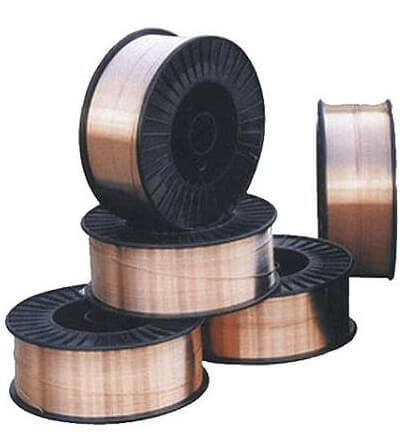
Gas shielded welding is categorized into three types: inert gas shielded welding (such as Tungsten Inert Gas (TIG) welding and Metal Inert Gas (MIG) welding), active gas shielded welding (Metal Active Gas (MAG) welding), and self-shielded welding.
Related reading: MIG vs TIG Welding
Pure Argon (Ar) is utilized for TIG welding, while Argon mixed with 2% Oxygen (Ar + 2% O2) or Argon mixed with 5% Carbon Dioxide (Ar + 5% CO2) is commonly used for MIG welding. Carbon Dioxide (CO2) gas is primarily used for MAG welding.
To enhance the process performance of CO2 welding, a mixture of CO2 + Argon or CO2 + Argon + Oxygen, or flux cored wire, can also be employed.
(1) TIG Welding Wire
TIG welding may or may not include filler wire. If filler wire is not used, the base metal is directly connected after being melted by the welding heat.
In cases where filler wire is employed, the composition of the welding wire remains unchanged after melting due to the pure Argon shielding gas that prevents oxidation.
As a result, the composition of the welding wire is the same as that of the weld. Some welders also use the base metal composition as the welding wire composition to ensure consistency between the base metal and the weld.
TIG welding offers low welding energy, high weld strength, plasticity and toughness, and is easy to meet performance requirements.
(2) MIG and MAG Welding Wires
The MIG method is mainly used for welding high-alloy steel, such as stainless steel. To improve arc characteristics, an appropriate amount of Oxygen (O2) or Carbon Dioxide (CO2) gas is added to Argon gas, which is referred to as the MAG method. When welding alloy steel, the addition of 5% CO2 to Argon can improve weld anti-porosity.
However, when welding ultra-low carbon stainless steel, only Argon mixed with 2% Oxygen can be used to prevent weld carburization. Currently, MIG welding of low-alloy steel is being replaced by MAG welding with Argon mixed with 20% CO2.
During MAG welding, the presence of oxidation in the shielding gas necessitates an increase in deoxidizing elements such as Silicon (Si) and Manganese (Mn) in the welding wire.
Other components of the welding wire may match or differ from the base metal. When welding high-strength steel, the Carbon (C) content in the weld is usually lower than that of the base metal and the Manganese (Mn) content should be higher, for both deoxidation and alloy composition requirements.
To improve low-temperature toughness, the Silicon (Si) content in the weld should not be too high.
(3) CO2 Welding Wire
CO2 is an active gas with strong oxidation, so the welding wire used for CO2 welding must contain high deoxidizing elements such as Manganese (Mn) and Silicon (Si). Mn-Si welding wire, such as h08mnsia, H08Mn2SiA, h04mn2sia, etc., is usually used for CO2 welding.
The diameter of CO2 welding wire ranges from 0.89mm to 2.0mm, with wire diameters less than or equal to 2mm being considered thin wire CO2 welding and wire diameters greater than or equal to 1.6mm being considered thick wire CO2 welding.
H08Mn2SiA welding wire is a commonly used CO2 welding wire with good process performance, suitable for welding low-alloy steel with a strength grade below 500MPa.
For steel with higher strength grade requirements, welding wire containing Molybdenum (Mo), such as H10MnSiMo, should be utilized.
Electroslag welding is an appropriate method for welding medium and thick plates. The electroslag welding wire serves primarily as a filler metal and for alloying purposes.
The commonly used wire grades for low carbon steel and low-alloy high-strength steel submerged arc welding can be seen in Table 3.
Table 3 Commonly used wire grades for low carbon steel and low-alloy high-strength steel submerged arc welding.
| Welding Steel Number | Commonly Used Welding Wire Models | |
| Q235,Q255 15,20,25 16Mn,09Mn2 15MnV,15MnVCu 15MnVN,14MnMoV,18MnMoNb | H08MnA H08MnA,H10Mn2 H08Mn2Si,H10MN2,H10MnSi,H08MnMoA H08MnMoA,H08Mn2MoVA H10Mn2MoVA,H10Mn2Mo |
The first two letters of the brand, “HS,” represent non-ferrous metal and cast iron welding wires. The first digit in the brand indicates the academic composition type of welding wire, and the second and third digits indicate different brands of the same type of welding wire.
(1) Surfacing Welding Wire
There are currently two main types of cemented carbide welding wires for surfacing: high chromium alloy cast iron (Solmait) and cobalt-based (Stellite) alloy.
High chromium alloy cast iron offers good oxidation and cavitation resistance, high hardness, and good wear resistance. Cobalt-based alloys maintain high hardness and good corrosion resistance at high temperatures of up to 650 degrees.
Low carbon and low tungsten welding wires have good toughness, while high carbon and high tungsten welding wires have high hardness but poor impact resistance.
Hard alloy surfacing welding wire can be overlaid using oxygen acetylene, gas electric welding, and other methods.
Although oxygen acetylene surfacing has low production efficiency, its equipment is simple, welding depth is shallow, and the amount of base metal melted is small, resulting in high surfacing quality. As a result, it is widely used.
The composition, characteristics, and applications of commonly used hard alloy hardfacing welding wires are shown in Table 11.
Table 11: Composition, Characteristics, and Applications of Commonly Used Hard Alloy Hardfacing Welding Wires
| Grade | Name | Chemical Composition /% | The hardness of the surfacing layer at room temperature is HRC. | Main Features and Applications |
| HS101 | High Chromium Cast Iron Overlay Welding Wire | C2.5~3.3 Cr25~31 Ni3~5 Si2.8~4.2 Fe Excess material | 48~54 | The overlay has excellent oxidation and gas corrosion resistance, high hardness, and good abrasion resistance. However, it should not be used above 500℃ as it will reduce the hardness. It is suitable for overlay welding applications that require wear resistance, oxidation resistance, or gas corrosion resistance, such as excavator teeth, pump bushings, diesel engine valves, exhaust blades, etc. |
| HS103 | High Chromium Cast Iron Overlay Welding Wire | C3~4 Cr25~32 Co4~6 B0.5~1.0 Fe Excess material | 58~64 | The overlay has excellent oxidation resistance, high hardness, and good wear resistance, but poor impact resistance. It is difficult to cut and can only be ground. It is used in applications requiring strong wear resistance, such as gear drill shafts, coal hole excavators, crusher rolls, pump frames, mixing blades, etc. |
| HS111 | Cobalt-based Overlay Welding Wire (Equivalent to AWSRCoCr-A) | C0.9~1.4 Cr26~32 W3.5~6.0 Fe≤2.0 Co Excess material | 40~45 | The Co-Cr-W alloy with the lowest C and W content has the best toughness, can withstand impact under cold and hot conditions, has a small tendency to crack, and has good corrosion, heat, and wear resistance. It is used in situations that require good wear and corrosion resistance at high temperatures, such as high-temperature high-pressure valves, hot shear blades, hot forging dies, etc. |
| HS112 | Cobalt-based Overlay Welding Wire (Equivalent to AWSRCoCr-B) | C1.2~1.7 Cr26~32 W7~9.5 Fe≤2.0 Co Excess material | 45~50 | This Co-Cr-W alloy has medium hardness, better wear resistance than HS111, but slightly inferior plasticity. It has good corrosion, heat, and wear resistance, and can maintain these properties at temperatures up to 650℃. It is used for overlay welding of high-temperature high-pressure valves, internal combustion engine valves, synthetic fiber scissors blades, high-pressure pump bushings and inner lining sleeves, hot rolling rolls, etc. |
| HS113 | Cobalt-based Overlay Welding Wire | C2.5~3.0 Cr27~33 W15~19 Fe≤2.0 Co Excess material | 55~60 | The overlay has high hardness and excellent wear resistance, but poor impact resistance and a large tendency to crack during overlay welding. It has good resistance, heat and wear resistance, and can maintain these properties at temperatures up to 650℃. It is mainly used for overlay welding of gear drill bearings, boiler rotating blades, crusher blades, screw feeders, and other wear parts. |
| HS114 | Cobalt-based Overlay Welding Wire | C2.4~3.0 Cr27~33 W11~14 Fe≤2.0 Co Excess material | ≥52 | High carbon Co-Cr-W alloy overlay welding wire has good wear and corrosion resistance, but poor impact toughness. It is mainly used for overlay welding of high-temperature working gas turbines, aircraft engine turbine blades, gear drill bearings, boiler rotating blades, and other wear parts. |
| HS115 | Cobalt-based Overlay Welding Wire (Equivalent to AWSSRCoCr-E) | C0.15~0.35 Cr25.5~29 Mo5~6 Ni1.75~3.25 Co Excess material | ≥27 | The Mo reinforced low carbon Cr-Mo welding wire has good high-temperature corrosion resistance, impact resistance, and high-temperature strength. It is used for overlay welding of various valves, valve seats, turbine blades, casting molds, and extrusion molds. |
| HS116 | Cobalt-based Overlay Welding Wire (Equivalent to AWSRCoCr-C) | C0.70~1.20 Cr30~34 W12.5~15.5 Co Excess material | 46~50 | The overlay has higher wear resistance and high-temperature strength, but poor toughness. It has good corrosion resistance under sulfuric acid, phosphoric acid, and nitric acid conditions. It is used for overlay welding of copper-based and aluminum-based alloy hot pressing molds, etc. |
| HS117 | Cobalt-based Overlay Welding Wire | C2.30~2.60 Cr31~34 W16~18 Co Excess material | ≥53 | The overlay has strong wear resistance and corrosion resistance, and can maintain these characteristics at temperatures up to 800℃. It is used for pump bushings and rotary sealing rings, wear panels, etc. |
(2) Copper and Copper Alloy Welding Wire
Copper and copper alloy welding wires are commonly used for welding copper and copper alloys, and brass welding wires are also widely used for brazing carbon steel, cast iron, and cemented carbide tools.
A variety of welding methods can be used for welding copper and copper alloys, and the correct selection of filler metal is crucial for obtaining high-quality welds. When using oxygen acetylene gas welding, it should be used in conjunction with gas welding flux.
The types and chemical composition of copper and copper alloy welding wires can be seen in Table 5. The commonly used grades, models, and applications of copper and copper alloy welding wires are listed in Table 6.
Table 5: Types and Chemical Composition of Copper and Copper Alloy Welding Wires
| Type | Model Number | Chemical Composition / % | ||||||||||||
| Cu | Zn | Sn | Si | Mn | Ni | Fe | P | Pb | Al | Ti | S | Total amount of other elements | ||
| Copper | HSCu | ≥98.0 | * | ≤1.0 | ≤0.5 | ≤0.5 | * | * | ≤0.15 | ≤0.02 | ≤0.01 | - | - | ≤0.05 |
| Brass | HSCuZn-1 | 57.0~60.0 | Margin | 0.5~1.5 | - | - | - | - | - | ≤0.05 | ≤0.01 | - | - | ≤0.05 |
| HSCuZn-2 | 56.0~60.0 | 0.8~1.1 | 0.04~0.15 | 0.01~0.5 | - | 0.25~1.20 | ||||||||
| HSCuZn-3 | 56.0~62.0 | 0.5~1.5 | 0.1~0.5 | ≤1.0 | ≤1.5 | ≤0.5 | ||||||||
| HSCuZn-4 | 61.0~63.0 | - | 0.3~0.7 | - | - | - | ||||||||
| Nickel Silver | HSCuZnNi | 46.0~50.0 | - | - | ≤0.25 | - | 9.0~11.0 | - | ≤0.25 | ≤0.05 | ≤0.02 | - | - | ≤0.50 |
| HSCuNi | Margin | - | * | ≤0.15 | ≤1.0 | 29.0~32.0 | 0.40~0.75 | ≤0.02 | ≤0.02 | 0.20~0.50 | ≤0.01 | |||
| Bronze | HSCuSi | Margin | ≤1.5 | ≤1.0 | 2.8~4.0 | ≤1.5 | * | ≤0.5 | * | ≤0.02 | * | - | - | ≤0.5 |
| HSCuSn | * | 6.0~9.0 | * | * | * | * | 0.10~0.35 | ≤0.01 | ||||||
| HSCuAl | ≤1.0 | - | ≤0.10 | ≤2.0 | - | - | * | 7.0~9.0 | ||||||
| HSCuAlNi | ≤1.0 | - | ≤0.10 | 0.5~3.0 | 0.5~3.0 | ≤2.0 | * | 7.0~9.0 | ||||||
Note: The total amount of impurity elements includes the sum of the elements marked with an asterisk (*).
Table 6: Brand, model, and purpose of commonly used copper and copper alloy welding wires.
| Grade | Model Number | Name | Chemical Composition /% | Melting Point /℃ | Applications: |
| HS201 | HSCu | Special Custom-Made Purple Copper Welding Wire | Sn1.1 Si0.4 Mn0.4 remainder Cu | 1050 | Used as a filler material in argon arc welding and oxy-acetylene gas welding of red copper. |
| HS202 | - | Low Phosphorus Copper Welding Wire | P0.3 remainder Cu | 1060 | Serves as a filler material in oxy-acetylene gas welding and carbon arc welding of red copper. |
| HS220 | HSCuZn-1 | Tin Brass Welding Wire | Cu59 Sn1 remainder Zn | 860 | Utilized as a filler material in the oxy-acetylene welding and inert gas shielded welding of brass. Also suitable for brazing copper, copper alloys, and cupronickel alloys. |
| HS221 | HSCuZn-3 | Tin Brass Welding Wire | Cu60 Sn1 Si0.3 remainder Zn | 890 | Functions as a filler material in oxy-acetylene gas welding and carbon arc welding of brass. It is also widely used in brazing copper, steel, cupronickel alloys, grey cast iron, and for inlaying hard alloy tools. |
| HS222 | HSCuZn-2 | Iron Brass Welding Wire | Cu58 Sn0.9 Si0.1 Fe0.8 remainder Zn | 860 | Used as a filler material in oxy-acetylene gas welding and carbon arc welding of brass. It can also be used in brazing copper, steel, cupronickel alloys, grey cast iron, and for inlaying hard alloy tools. |
| HS224 | HSCuZn-4 | Silicon Brass Welding Wire | Cu62 Si0.5 remainder Zn | 905 | Employed as a filler material in oxy-acetylene gas welding and carbon arc welding of brass. It can also be used in brazing copper, cupronickel, and grey cast iron. |
(3) Aluminum and Aluminum Alloy Welding Wire
Aluminum and aluminum alloy welding wires are used as filler materials for aluminum alloy argon arc welding and oxygen acetylene gas welding. The selection of welding wire is mainly based on the type of base metal, crack resistance, mechanical properties, and corrosion resistance of the butt joint.
In general, welding wires with the same or similar brand as the base metal are used for welding aluminum and aluminum alloys to achieve better corrosion resistance.
However, when welding heat-treated strengthening aluminum alloys with a high tendency for hot cracking, the selection of welding wire mainly focuses on solving crack resistance. In this case, the composition of the welding wire is significantly different from that of the base metal.
The common types and applications of aluminum and aluminum alloy welding wires are shown in Table 8.
Table 7: Types and Chemical Compositions of Aluminum and Aluminum Alloy Welding Wires.
| Type | Model Number | Chemical Composition/% | |||||||||||
| Si | Fe | Cu | Mn | Mg | Cr | Zn | Ti | V | Zr | Al | Total amount of other elements | ||
| Pure Aluminum | SAl-1 | Fe+Si≤1.0 | 0.05 | 0.05 | - | - | 0.10 | 0.05 | - | - | ≥99.0 | 0.15 | |
| SAl-2 | 0.20 | 0.25 | 0.40 | 0.03 | 0.03 | 0.04 | 0.03 | ≥99.7 | |||||
| SAl-3 | 0.30 | 0.30 | - | - | - | - | - | ≥99.5 | |||||
| Aluminum Magnesium | SAlMg-1 | 0.25 | 0.40 | 0.10 | 0.50~1.0 | 2.40~3.0 | 0.05~0.20 | - | 0.05~0.20 | Margin | |||
| SAlMg-2 | Fe+Si≤0.45 | 0.05 | 0.01 | 3.10~3.90 | 0.15~0.35 | 0.20 | 0.05~0.15 | ||||||
| SAlMg-3 | 0.40 | 0.40 | 0.10 | 0.50~1.0 | 4.30~5.20 | 0.05~0.25 | 0.25 | 0.15 | |||||
| SAlMg-5 | 0.40 | 0.40 | - | 0.20~0.60 | 4.70~5.70 | - | - | 0.05~0.20 | |||||
| Aluminum Copper | SAlCu | 0.20 | 0.30 | 5.8~6.8 | 0.20~0.40 | 0.02 | 0.10 | 0.10~0.20 | 0.05~0.15 | 0.10~0.25 | |||
| Aluminum Manganese | SAlMn | 0.60 | 0.70 | - | 1.0~1.6 | - | - | - | - | - | |||
| Aluminum Silicon | SAlSi-1 | 4.5~6.0 | 0.80 | 0.30 | 0.05 | 0.05 | 0.10 | 0.20 | |||||
| SAlSi-2 | 11.0~13.0 | 0.80 | 0.30 | 0.15 | 0.10 | 0.20 | - | ||||||
Note: Except where specified, a single number represents the maximum value.
Table 8: Composition and Uses of Common Aluminum and Aluminum Alloy Welding Wires.
| Grade | Chemical Composition/% | Melting Point ℃ | Applications: |
| HS301 (Wire 301) | Al≥99.5% Si≤0.3% Fe≤0.3% | 660 | Welding of pure aluminum and aluminum alloys that do not require high welding performance. |
| HS311 (Wire 311) | Si4.5~6.0% Fe≤0.6% remainder Al | 580~610 | Welding of aluminum alloys other than aluminum-magnesium alloys, especially heat-treated strengthened aluminum alloys that are prone to hot cracking. |
| HS321 (Wire 321) | Mn1.0~1.6% Si≤0.6% Fe≤0.7% remainder Al | 643~654 | Welding of aluminum-manganese and other aluminum alloys. |
| HS331 (Wire 331) | Mg4.7~5.7% Mn0.2~0.6% Si≤0.4% Fe≤0.4% Ti0.05~0.2% remainder Al | 638~660 | Welding of aluminum-magnesium alloys and aluminum-zinc-magnesium alloys, repair welding of aluminum-magnesium alloy castings. |
(4) Cast Iron Welding Wire
Cast iron welding wire is mainly used for repairing cast iron through gas welding. The oxygen acetylene flame temperature (less than 3400°C) is much lower than the arc temperature (6000°C), and the hot spots are not concentrated, making it more suitable for repairing thin-walled castings of gray cast iron.
Furthermore, the lower flame temperature of gas welding reduces the evaporation of the spheroidizing agent, which is beneficial for preserving the microstructure of nodular cast iron in the weld.
There are currently two types of nodular iron welding wires for gas welding: rare earth magnesium alloy and yttrium-based heavy rare earth. Yttrium has a high boiling point and stronger resistance to spheroidization decline than magnesium, making it more effective in ensuring weld spheroidization. As a result, it has been widely used in recent years.
For the model and chemical composition of the cast iron welding wire, refer to Table 9. For the compositional characteristics and uses of commonly used gas welding wires for cast iron repair, refer to Table 10.
Table 9 Model and Chemical Composition of Cast Iron Welding Wire
| Model or Brand | Chemical Composition/% | ||||||||
| C | Si | Mn | S | P | Ni | Mo | Ce | Spheroidizing Agent | |
| RZC-1 | 3.2~3.5 | 2.7~3.0 | 0.60~0.75 | ≤0.10 | 0.50~0.75 | - | - | - | - |
| RZC-2 | 3.5~4.5 | 3.0~3.8 | 0.30~0.80 | ≤0.05 | - | - | - | - | |
| RZCH | 3.2~3.5 | 2.0~2.5 | 0.50~0.70 | 0.20~0.40 | 1.2~1.6 | 0.25~0.45 | - | - | |
| RZCQ-1 | 3.2~4.0 | 3.2~3.8 | 0.10~0.40 | ≤0.015 | ≤0.05 | ≤0.50 | - | ≤0.20 | 0.04~0.10 |
| RZCQ-2 | 3.5~4.2 | 3.5~4.2 | 0.50~0.80 | ≤0.03 | ≤0.10 | - | - | - | 0.04~0.10 |
| HS401Hot Welding Wire | 3.0~4.2 | 2.8~3.6 | 0.30~0.80 | ≤0.08 | Spheroidizing Agent | - | - | - | - |
| HS401Cold Welding Wire | 3.0~4.2 | 3.8~4.8 | 0.30~0.80 | - | - | - | - | ||
| HS402 Heavy Rare Earth Welding Wire | 3.8~4.2 | 3.0~3.6 | 0.50~0.80 | ≤0.05 | ≤0.50 | - | - | - | Yttrium-based Heavy Rare Earth 0.08-0.10 |
| Light Rare Earth Welding Wire | 3.5~4.0 | 3.5~3.9 | 0.50~0.80 | ≤0.03 | ≤0.10 | - | - | - | Rare Earth Magnesium 0.03-0.04 |
Note: The model (RZC×-×) and chemical composition of cast iron welding wire are formulated according to GB 10044-1988; The brand (HS4××) and chemical composition of cast iron welding wire are included in the “Welding Material Product Sample”, those without a brand are non-standard welding wires.
Table 10: Composition and use of commonly used cast iron gas welding wire.
| Grade | Model Number | Chemical Composition / % | Applications: |
| HS401 | RZC-2 | C3.0~4.2 Si2.8~3.6 Mn0.3~0.8 | Used for welding and repairing gray iron castings, such as the restoration of certain gray iron parts and the welding and surfacing of agricultural tools, at a low cost. |
| HS402 | RZCQ-2 | C3.8~4.2 Si3.0~3.6 Mn0.5~0.8 RE0.08~0.15 | Used for welding and surfacing of ductile iron parts. |
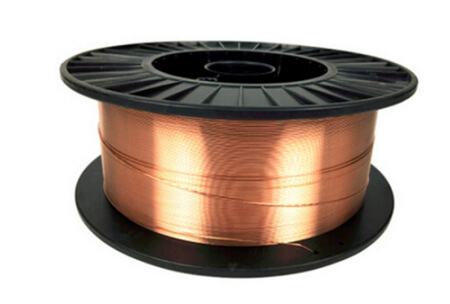
According to the structure of welding wire, flux-cored wire can be divided into seam and seamless welding wire. Seamless welding wire, which can be plated with copper for improved performance and lower cost, is the direction of future development. Flux-cored wire can also be divided based on the presence of shielding gas into gas-shielded and self-shielded wire.
The core powder of flux-cored wire is similar to that of electrode coating and contains arc stabilizers, deoxidizers, slag forming agents, and alloying agents. Depending on the presence of slag forming agents in the filler powder, it can be divided into “flux type” and “metal powder type” welding wire. The basicity of the slag further categorizes the welding wire into titanium, titanium calcium, and calcium types.
Titanium slag flux-cored wire has an attractive weld bead formation, good all-position welding performance, stable arc, and minimal spatter, but the toughness and crack resistance of the weld metal is poor. Calcium slag flux-cored wire has excellent weld toughness and crack resistance, but the weld bead formation and welding performance are slightly inferior. The titanium calcium slag system is a compromise between the two.
The welding performance of “Metal powder type” flux-cored wire is similar to that of solid cored wire, and it has better deposition efficiency and crack resistance compared to “powder type” wire.
The core of most metal powder type wires contains metal powder (such as iron powder and deoxidizers) and a special arc stabilizer for reduced slag formation, high efficiency, minimal spatter, stable arc, low diffusible hydrogen content in the weld, and improved crack resistance.
The section shape of the flux-cored wire significantly impacts the welding process and metallurgical properties. It can be divided into simple O-shape and complex folding shapes, such as quincunx, T-shape, E-shape, and intermediate wire filling shapes.
The more complex and symmetrical the section shape of the wire, the more stable the arc and the more sufficient the metallurgical reaction and protection provided by the flux-cored wire.
However, this difference decreases with decreasing wire diameter, and when the diameter is less than 2mm, the shape’s influence is not significant.
Flux-cored wire has excellent welding performance, good weld quality, and strong adaptability to steel. It can be used for welding various types of steel structures, including low-carbon steel, low-alloy high-strength steel, low-temperature steel, heat-resistant steel, stainless steel, and wear-resistant surfacing.
The shielding gases used include CO2 and Ar + CO2, with CO2 used for ordinary structures and Ar + CO2 used for important structures. The wire is suitable for automatic or semi-automatic welding, and can be used with DC or AC arc welding.
Most of these welding wires are part of the titanium slag system and are known for their good welding processability and high productivity. They are commonly used in various industries such as shipbuilding, bridge construction, vehicle manufacturing, etc. There are different types of flux-cored wires available for both low carbon steel and high strength steel.
From a strength perspective, flux-cored wires with tensile strengths of 490MPa and 590MPa have gained widespread use.
In terms of performance, some focus on process performance while others focus on weld mechanical properties and crack resistance. Some are suitable for all-position welding, including downward vertical welding, and some are specifically designed for fillet welds.
There are over 20 types of stainless steel flux-cored wires, including those made of chromium nickel stainless steel and chromium stainless steel. The diameter of these welding wires ranges from 0.8mm to 1.6mm, making them suitable for welding thin, medium, and thick stainless steel plates.
The most commonly used shielding gas for these wires is CO2, although a mixture of Argon and CO2 (at a ratio of 20% to 50%) can also be used.
In order to improve wear resistance or achieve specific properties on metal surfaces, a certain amount of alloy elements need to be transferred from the welding wire. However, this can be challenging due to the high carbon content and alloy elements in the welding wire.
With the introduction of flux-cored wires, these alloy elements can be added to the flux core, making the manufacturing process more convenient. As a result, the use of flux-cored wires for submerged arc surfacing of wear-resistant surfaces has become a common method and is widely used.
By adding alloy elements to the sintered flux, it is also possible to obtain a surfacing layer with corresponding components after surfacing. This method can meet different surfacing requirements when used in combination with solid core or flux-cored wires.
The common methods for flux-cored wire CO2 surfacing and flux-cored wire submerged arc surfacing are characterized by high welding efficiency and excellent welding process performance, including a stable arc, minimal spatter, easy slag removal, and a smooth surface.
The method using flux-cored wire CO2 surfacing is mostly used for surfacing layers with low alloy composition and can only be used for the transition of alloy elements in the flux-cored wire.
Flux-cored wire submerged arc surfacing, on the other hand, uses larger diameter flux-cored wires (3.2mm to 4.0mm) and results in significantly improved welding productivity. The use of flux allows for the transfer of alloy elements, making it possible to achieve higher alloy composition in the surfacing layer, ranging from 14% to 20% to meet different application requirements.
This method is mainly used for surfacing wear-resistant and corrosion-resistant parts, such as rolling rolls, feed rolls, and continuous casting rolls.
Self-shielded welding wire refers to welding wire that can conduct arc welding without the need for shielding gas or flux, resulting in qualified welds.
Self-shielded flux-cored welding wire contains powder and metal powder that serve as slag and gas making, as well as deoxidation, either within the steel sheet or coated on the surface of the welding wire.
During welding, the powder transforms into slag and gas under the action of the arc, providing slag and gas protection without the need for additional gas protection.
Self-shielded flux-cored wire has a higher deposition efficiency compared to electrodes.
In terms of flexibility and wind resistance, field welding with self-shielded flux-cored wire is better than gas-shielded welding, and can typically be welded in wind speeds of up to four levels.
Due to the absence of the need for protective gas and its suitability for field or high-altitude operations, self-shielded welding wire is commonly used at construction and installation sites.
However, the weld metal plasticity and toughness of self-shielded welding wire is generally lower compared to that of flux-cored welding wire with shielding gas.
At present, self-shielded welding wire is mainly used for welding low-carbon steel structures and is not recommended for welding important structures such as high-strength steel.
Additionally, self-shielded welding wire produces a significant amount of smoke and dust during welding, making it necessary to ensure proper ventilation when working in confined spaces.

